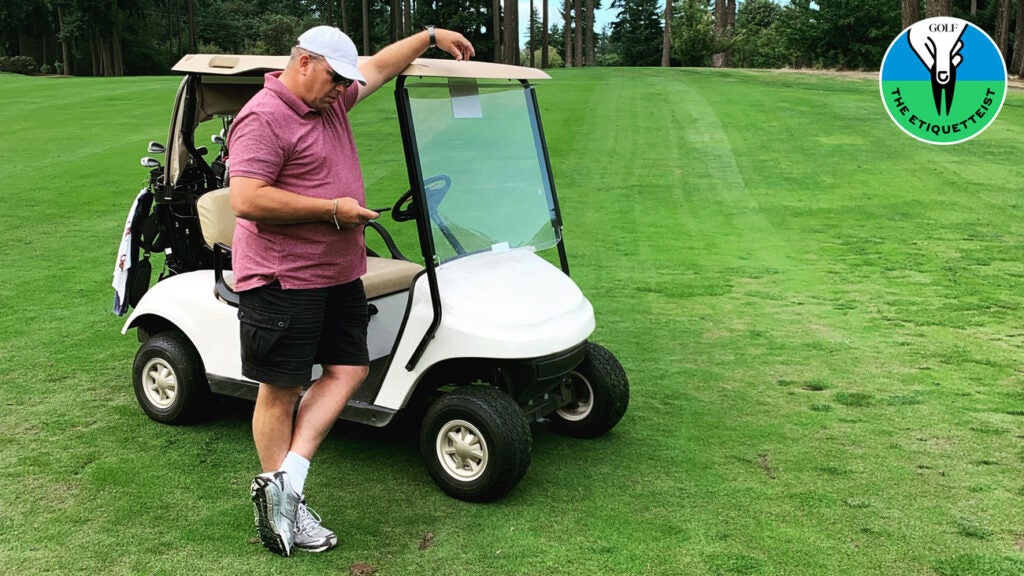What’s the quickest way to irritate your fellow golfer?
Two words: play slowly.
And now a few more words to provide some context. In a recent GOLF.com etiquette survey, we asked our readers which on-course behaviors most bother.
The answers ran the gamut. Of the more than 3,800 respondents, about 18% cited poor course maintenance (such as the failure to fix ball marks, rake bunkers and fill divots) as the breach that most drives them batty. Roughly 8% said that music on the course is their prime peeve. They can’t stand hearing tunes on the tee. Childish antics also got some mention: 6% of respondents said that club throwing is the conduct they dislike the most.
CHECK OUT THE COMPLETE RESULTS OF OUR GOLF-ETIQUETTE SURVEY HERE
Notably, a little more than 1 percent of the total survey pool called out dress-code violations as their chief concern. Golfers these days seem relatively unbothered by backward caps and untucked shirts.
The survey questions were multiple choice. But because that format can be limiting, we also invited readers to share stories about the worst behaviors they have witnessed. Here’s a sampling:
“Lying about scores.”
“Driving cart onto green.”
“Guys standing on a tee box in plain sight and peeing.”
“Some jerk hit into us three times with no warning or apology. The last time, I picked up the ball and tossed it in the water. He came after me with a club.”
You get the picture. (And more to come on that feedback in a future installment of The Etiquetteist.) Golfers get their backs up about a lot of things
But the most common irritant? It’s not even close. In our survey, more than 65 percent of respondents cited slow play as the worst of the bad behaviors.
Which, in turn, raises another question: What, exactly, constitutes a sluggish pace?
In our survey, we asked readers how long they thought it should it to take for a foursome to get through 18 holes. Here, the answers ranged from “3 to 3:30 hours” to “whatever time it takes.” But there was some consensus. More than 55 percent of respondents said that 3:30 to 4 hours is a reasonable target. Anything beyond that is widely regarded as too slow.
Slow play, of course, is a complicated problem, arising from a range of factors, including tee time intervals, course setups and other management practices. But golfer behavior also matters.
Which brings us to something else: the gap between perception and reality, a disconnect that’s evident in both the professional and amateur games. Consider this: surveys of Tour pros have revealed that the world’s best players think slow play is a widespread problem. And yet few pros identify themselves as slow players. Other golfers are the problem.
Something similar was suggested in our survey, in which we also asked readers to assess their own pace of play. The answers were revealing: more than 63 percent of respondents described themselves as fast players, while just over 36 percent said they play at a moderate place. But slow play? Less than 1 percent of respondents said they were guilty of that.
In this view of the world, someone — or something — else is always causing the backup. It makes you wonder. We golfers see a lot of things. But how clearly do see ourselves?
